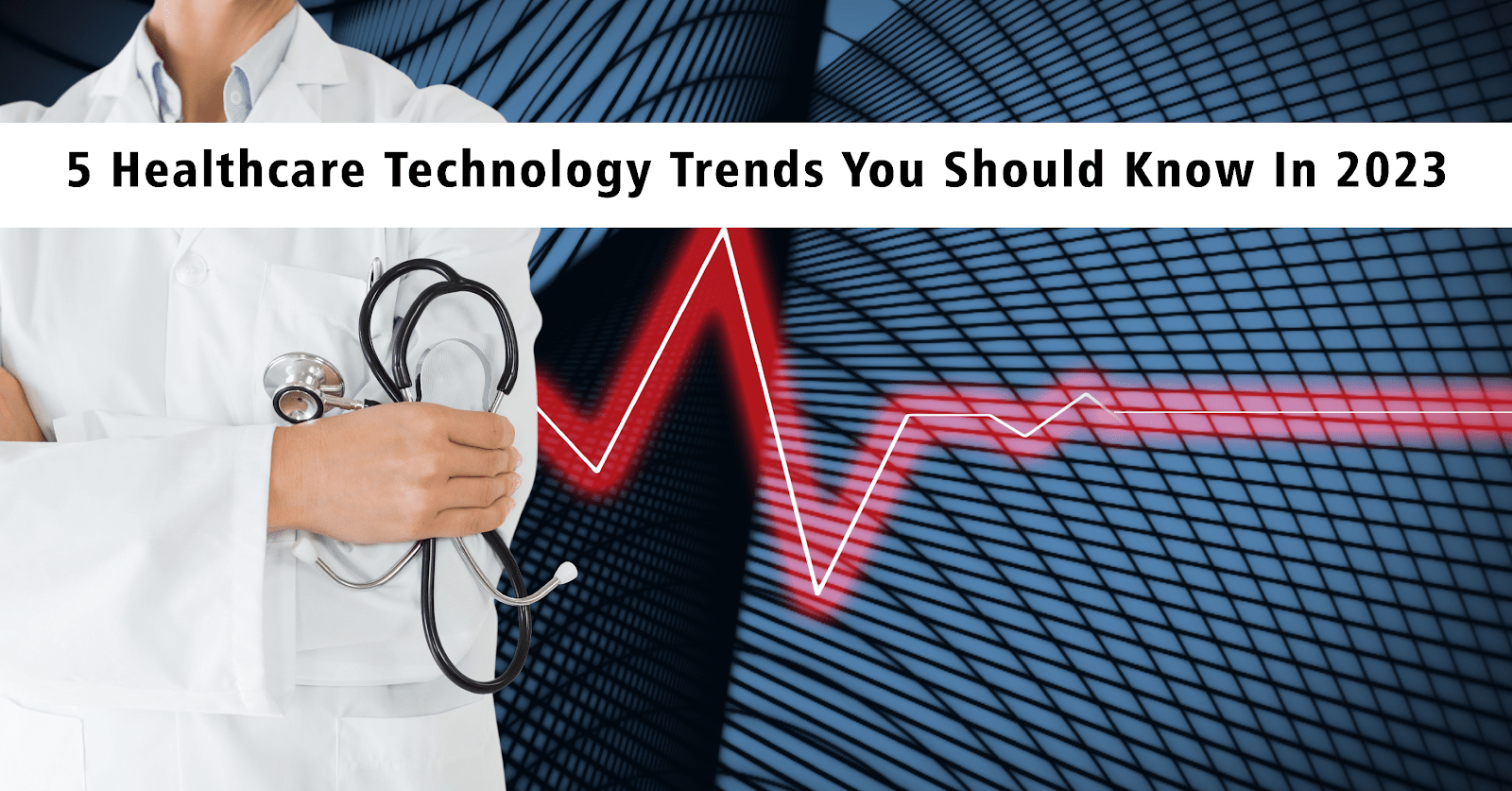The healthcare sector has benefited greatly from technological improvements. The good news is that more are still coming in faster than before.
Future developments in healthcare technology include the expansion of telemedicine and the rise of AI. And here are the top 5 healthcare trends for 2023:
1. Internet of Medical Things
More than 10 billion IoT devices will be in use in 2021. By 2025, there will be more than 25.4 billion active IoT devices, according to experts. The healthcare sector has not lagged in adopting modern technology, as many enterprises have.
Patient monitoring, imaging equipment, and energy meters are typical IoT healthcare gadgets. IoT technology is used by most healthcare institutions for monitoring and equipment. In 2023, the demand for IoT in healthcare is projected to remain high due to these and other advantages of the technology.
IoT makes medical equipment more connected, which speeds up communication in the healthcare industry. WIFI may be coupled with other technologies to speed up a signal transfer between parties. For the best patient monitoring and treatment, practitioners can access a variety of data in real time.
2. Telemedicine
Since the beginning of the COVID-19 pandemic, trends in remote healthcare technology have dominated the sector. The mainstreaming of telemedicine occurred in 2021. And the technology says Dr Ian Tong, CMO of All Included, is here to stay.
Dr Ian predicts that virtual care meetings will develop into live doctor-patient video conferences. We can anticipate group sessions that concurrently enable the virtual assistance of many patients to combat the lack of behavioral healthcare professionals.
Telemedicine was well-liked before the pandemic for urgent, minor health conditions like colds and rashes. However, it is now being recognized as having greater utility as a treatment for the ongoing behavioral therapy and focused illness management. More individuals will favor a healthcare provider that offers telemedicine as technology develops.
3. AI-Powered Big Data and Analytics
Due to the volume of data involved, the world of healthcare is complicated. Because of its complexity, many conventional data management techniques are useless. For many healthcare concerns, artificial intelligence, analytics, and cloud computing are excellent options.
63% of organizations, according to a Deloitte poll, employ machine learning (AI). Between 2021 and 2028, the market for AI in healthcare is projected to expand at a CAGR of 41%. Healthcare might transform thanks to AI.
AI in healthcare is making the most of data to enhance decision-making and increase productivity. Numerous data points are generated by healthcare procedures, necessitating a more rapid and effective synthesis technique. A lot of data is wasted in healthcare systems without AI.
To optimize data and streamline procedures, cloud-based technologies and automated data systems are crucial in the healthcare industry. These systems guard against data loss and guarantee that all accessible data is combined for in-the-moment analyses.
Read More
Automated Analytics Workflows and the U.S. Healthcare System
4. Virtual Reality
VR technology is being used more frequently in the medical field. And there are many VR technology that is being used more frequently in the medical field. Additionally, there are a lot of advantages to using VR in healthcare.
At St. George’s Hospital in the UK in 2019, VR headsets assisted patients in overcoming anxiety symptoms. All patients who used the headsets said their anxiety had improved. Children and adults who were dealing with an autistic spectrum condition benefited from this device as well.
Up to 2025, Goldman Sachs Global Investment Research predicts that the healthcare industry will continue to lead the way in VR adoption. The majority of medical experts agree that AR offers an easy approach for the sector to share information.
VR can help healthcare and therapy practitioners give more individualized treatment and enhance their services. The interactivity and simplicity of usage encourage the provision of effective patient care. You can cut costs, provide better service, and increase your bottom line by implementing VR.
5. Robotic Healthcare Technology Trends
Within a few years, robots went from being a pipe dream to an actual technology in several sectors. One of the sectors that have embraced robotic treatments most enthusiastically is healthcare.
Robotic developments have the potential to completely change the way healthcare is provided. Surgery, treatment, rehabilitation, patient companionships, and many more fields may all benefit from robotics.
Robotics in healthcare may improve staff productivity, increase accuracy, reduce expenses, and alter various operations. Robotics imitate human intellect to deliver healthcare services more quickly, precisely, and successfully.
Additionally, rapid and precise appointment arranging and scheduling are made possible in hospitals by robotic interventions. It expedites the extraction and interpretation of patient data for quick medical diagnosis and care.
Bottom Line:
You must make the appropriate tool and software investments if you want to take full advantage of the latest developments in healthcare technology. You require adaptable instruments that can take advantage of and accommodate the most recent innovations.
Insight Case Management software is one that you absolutely must have for your healthcare organization. You can speed up data collecting, data synthesis, and operational efficiency with the aid of this user-friendly application.



